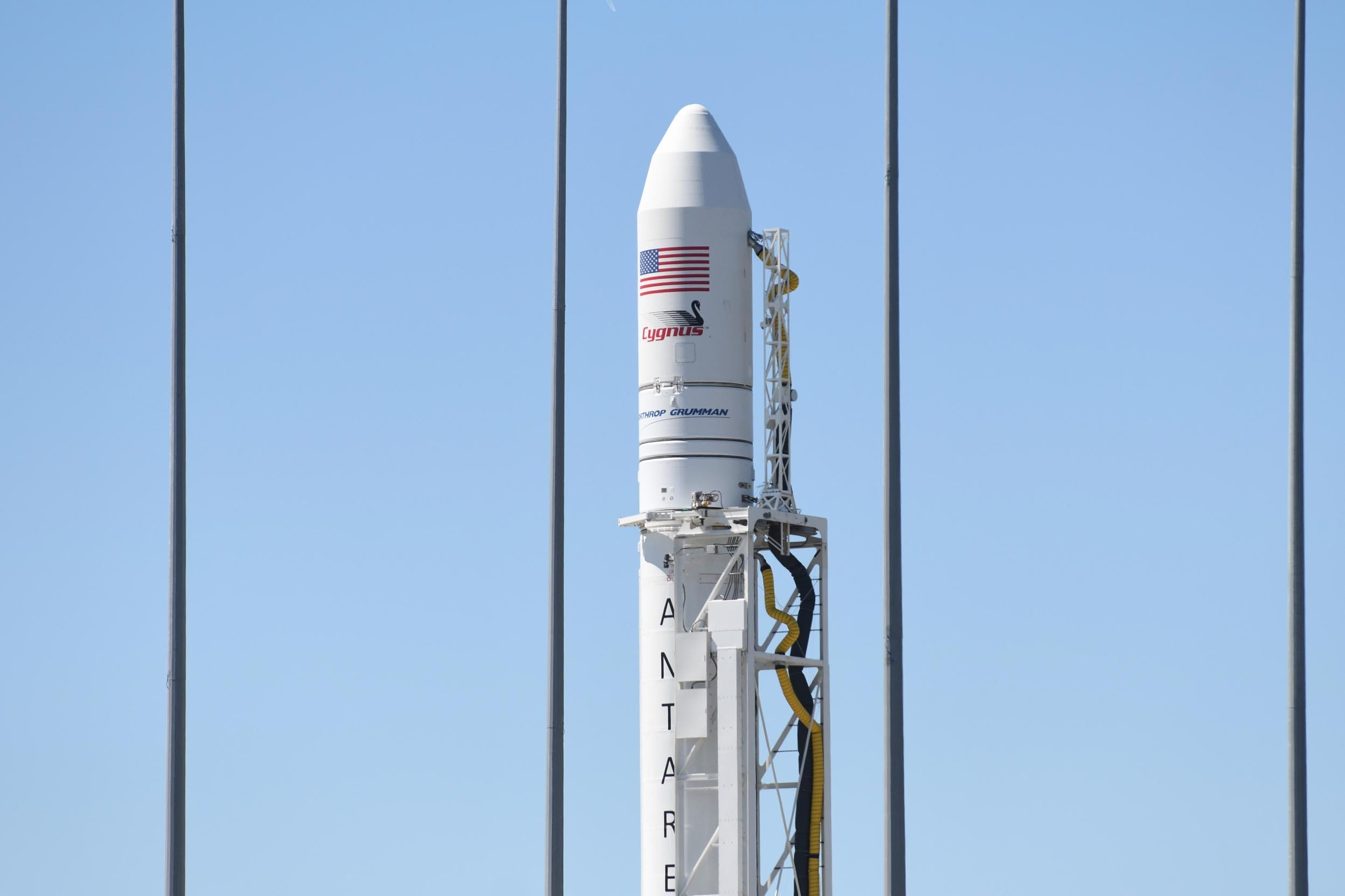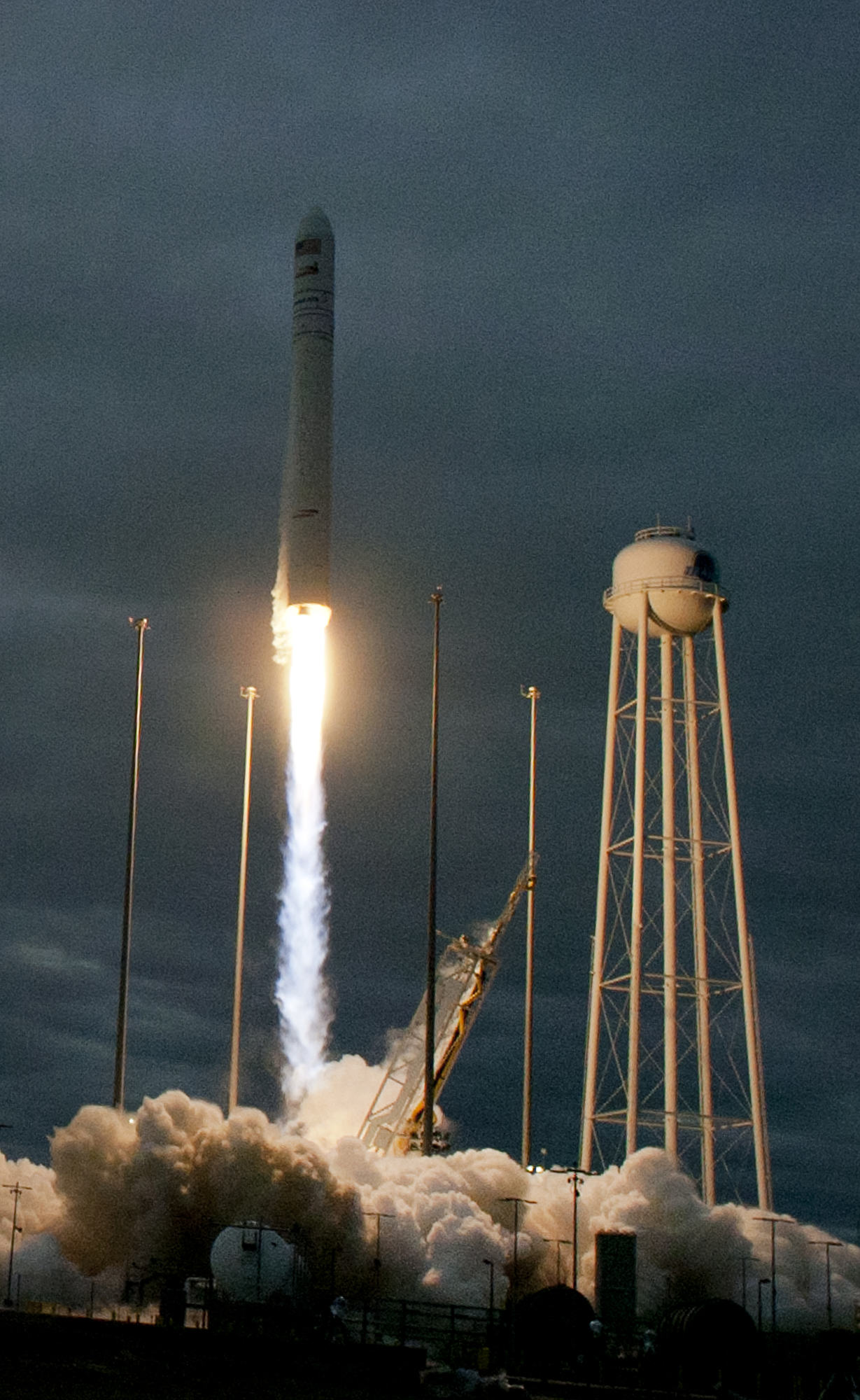

Launch updates also are available via the Wallops Facebook and Twitter sites. Live coverage of the mission is scheduled to begin at 7:40 a.m. The Operational Land Imager (OLI) on Landsat 8 captured this image of Wallops Island and the surrounding area on May 3, 2014. Jun 24 There’s light even in the dark NASA’s Aqua satellite captured an image of dark patches of water surrounded by sunglint just off the Delmarva Peninsula where Wallops is located. More: NASA Wallops sounding rocket launch is success after more than a week of waiting More: It's a success! See photos of Minotaur 1 rocket launch from NASA's Wallops Flight Facility A Northrop Grumman Antares rocket carrying a Cygnus resupply spacecraft is in the vertical launch position on the Mid-Atlantic Regional Spaceport’s Pad 0A, Saturday, Aug.

The rocket launch is expected to be seen from the eastern shore of Virginia and Maryland and southern Delaware. The launch was originally set for 8 a.m.Thursday, but was delayed due to rough seas. The rockets get their name from the nautical term “to sound,” meaning to take measurements.A Terrier Improved Orion sounding rocket is scheduled to launch Friday, June 25, from the NASA Wallops Flight Facility, with a window from 8-10 a.m., carrying 40 student experiments for the RockOn! mission.Īfter being developed via a virtual learning experience, more than 70 experiments built by university students across the United States are ready for flight on NASA suborbital flight vehicles. The facility launches about 25 sounding rockets a year, according to NASA. There will also be viewing locations on Chincoteague Island, including at Robert Reed. The launch was planned for earlier this week but was postponed because of weather conditions. The NASA Visitor Center at Wallops will be open for this launch starting at 4 p.m. “The second source is within the solar system and is generated by the solar wind charge exchange.” “The first source is located outside our solar system and is generated by remnants of multiple supernovae explosions forming what is now called the Local Hot Bubble region of our galaxy,” Galeazzi said in the release. Scientists think these X-rays come from two sources, said Massimiliano Galeazzi, the principal investigator for the mission from the University of Miami, Florida. A Terrier Improved Orion sounding rocket is scheduled to launch Friday, June 25, from the NASA Wallops Flight Facility, with a window from 8-10 a.m. They have lower energy than the X-rays used in the medical field. Soft X-rays aren’t harmful to people, but they can disturb radio communications and GPS systems, NASA said. Scientists hope the rocket will offer more insight into the source of soft X-rays, which “hurtle towards Earth from elsewhere in our galaxy,” the release said. The launch was set to visible in coastal regions from North Carolina to southern New York, weather permitting. and stay open until 30 minutes post launch. The sounding rocket launched at midnight, according to a tweet from the Wallops facility. Location: Wallops Island, Virginia Visitor Center Launch Viewing Area: Launch viewing area is scheduled to open at 4:30 a.m. Night owls on the mid-Atlantic coast were treated to a show in the sky overnight as a NASA rocket launched from the Wallops Flight Facility on Wallops Island, Virginia.


 0 kommentar(er)
0 kommentar(er)
